Sallie Mae 2009 Annual Report Download - page 242
Download and view the complete annual report
Please find page 242 of the 2009 Sallie Mae annual report below. You can navigate through the pages in the report by either clicking on the pages listed below, or by using the keyword search tool below to find specific information within the annual report.-
 1
1 -
 2
2 -
 3
3 -
 4
4 -
 5
5 -
 6
6 -
 7
7 -
 8
8 -
 9
9 -
 10
10 -
 11
11 -
 12
12 -
 13
13 -
 14
14 -
 15
15 -
 16
16 -
 17
17 -
 18
18 -
 19
19 -
 20
20 -
 21
21 -
 22
22 -
 23
23 -
 24
24 -
 25
25 -
 26
26 -
 27
27 -
 28
28 -
 29
29 -
 30
30 -
 31
31 -
 32
32 -
 33
33 -
 34
34 -
 35
35 -
 36
36 -
 37
37 -
 38
38 -
 39
39 -
 40
40 -
 41
41 -
 42
42 -
 43
43 -
 44
44 -
 45
45 -
 46
46 -
 47
47 -
 48
48 -
 49
49 -
 50
50 -
 51
51 -
 52
52 -
 53
53 -
 54
54 -
 55
55 -
 56
56 -
 57
57 -
 58
58 -
 59
59 -
 60
60 -
 61
61 -
 62
62 -
 63
63 -
 64
64 -
 65
65 -
 66
66 -
 67
67 -
 68
68 -
 69
69 -
 70
70 -
 71
71 -
 72
72 -
 73
73 -
 74
74 -
 75
75 -
 76
76 -
 77
77 -
 78
78 -
 79
79 -
 80
80 -
 81
81 -
 82
82 -
 83
83 -
 84
84 -
 85
85 -
 86
86 -
 87
87 -
 88
88 -
 89
89 -
 90
90 -
 91
91 -
 92
92 -
 93
93 -
 94
94 -
 95
95 -
 96
96 -
 97
97 -
 98
98 -
 99
99 -
 100
100 -
 101
101 -
 102
102 -
 103
103 -
 104
104 -
 105
105 -
 106
106 -
 107
107 -
 108
108 -
 109
109 -
 110
110 -
 111
111 -
 112
112 -
 113
113 -
 114
114 -
 115
115 -
 116
116 -
 117
117 -
 118
118 -
 119
119 -
 120
120 -
 121
121 -
 122
122 -
 123
123 -
 124
124 -
 125
125 -
 126
126 -
 127
127 -
 128
128 -
 129
129 -
 130
130 -
 131
131 -
 132
132 -
 133
133 -
 134
134 -
 135
135 -
 136
136 -
 137
137 -
 138
138 -
 139
139 -
 140
140 -
 141
141 -
 142
142 -
 143
143 -
 144
144 -
 145
145 -
 146
146 -
 147
147 -
 148
148 -
 149
149 -
 150
150 -
 151
151 -
 152
152 -
 153
153 -
 154
154 -
 155
155 -
 156
156 -
 157
157 -
 158
158 -
 159
159 -
 160
160 -
 161
161 -
 162
162 -
 163
163 -
 164
164 -
 165
165 -
 166
166 -
 167
167 -
 168
168 -
 169
169 -
 170
170 -
 171
171 -
 172
172 -
 173
173 -
 174
174 -
 175
175 -
 176
176 -
 177
177 -
 178
178 -
 179
179 -
 180
180 -
 181
181 -
 182
182 -
 183
183 -
 184
184 -
 185
185 -
 186
186 -
 187
187 -
 188
188 -
 189
189 -
 190
190 -
 191
191 -
 192
192 -
 193
193 -
 194
194 -
 195
195 -
 196
196 -
 197
197 -
 198
198 -
 199
199 -
 200
200 -
 201
201 -
 202
202 -
 203
203 -
 204
204 -
 205
205 -
 206
206 -
 207
207 -
 208
208 -
 209
209 -
 210
210 -
 211
211 -
 212
212 -
 213
213 -
 214
214 -
 215
215 -
 216
216 -
 217
217 -
 218
218 -
 219
219 -
 220
220 -
 221
221 -
 222
222 -
 223
223 -
 224
224 -
 225
225 -
 226
226 -
 227
227 -
 228
228 -
 229
229 -
 230
230 -
 231
231 -
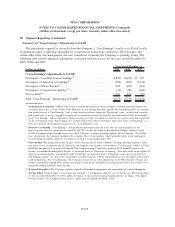 232
232 -
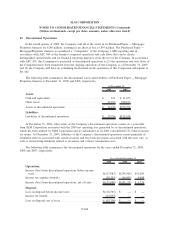 233
233 -
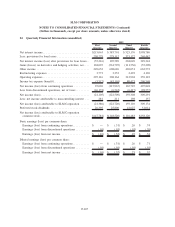 234
234 -
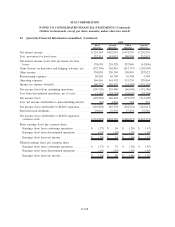 235
235 -
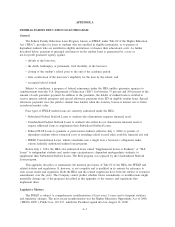 236
236 -
 237
237 -
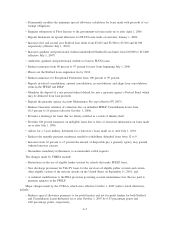 238
238 -
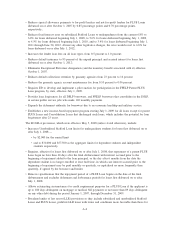 239
239 -
 240
240 -
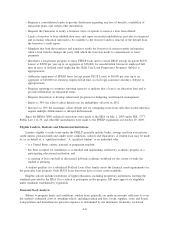 241
241 -
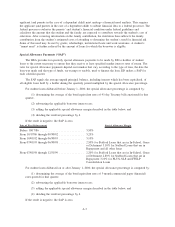 242
242 -
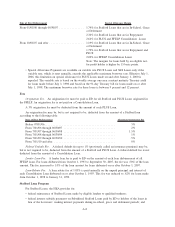 243
243 -
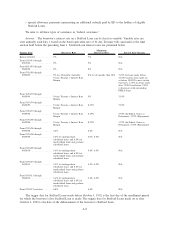 244
244 -
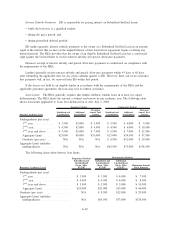 245
245 -
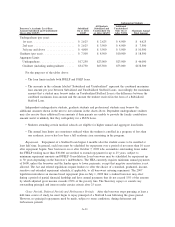 246
246 -
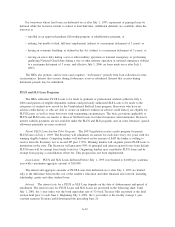 247
247 -
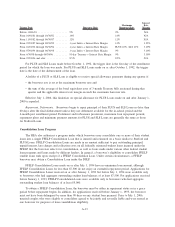 248
248 -
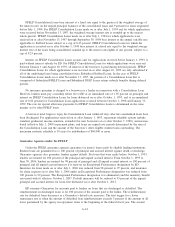 249
249 -
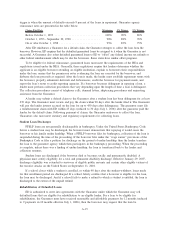 250
250 -
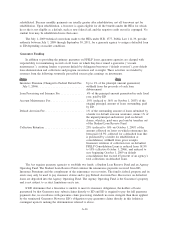 251
251 -
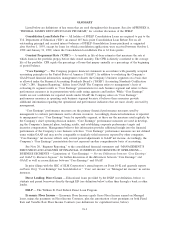 252
252 -
 253
253 -
 254
254 -
 255
255 -
 256
256
 |
 |

applicant (and parents in the case of a dependent child) must undergo a financial need analysis. This requires
the applicant (and parents in the case of a dependent child) to submit financial data to a federal processor. The
federal processor evaluates the parents’ and student’s financial condition under federal guidelines and
calculates the amount that the student and the family are expected to contribute towards the student’s cost of
education. After receiving information on the family contribution, the institution then subtracts the family
contribution from the student’s estimated costs of attending to determine the student’s need for financial aid.
Some of this need may be met by grants, scholarships, institutional loans and work assistance. A student’s
“unmet need” is further reduced by the amount of loans for which the borrower is eligible.
Special Allowance Payments (“SAP”)
The HEA provides for quarterly special allowance payments to be made by ED to holders of student
loans to the extent necessary to ensure that they receive at least specified market interest rates of return. The
rates for special allowance payments depend on formulas that vary according to the type of loan, the date the
loan was made and the type of funds, tax-exempt or taxable, used to finance the loan. ED makes a SAP for
each calendar quarter.
The SAP equals the average unpaid principal balance, including interest which has been capitalized, of
all eligible loans held by a holder during the quarterly period multiplied by the special allowance percentage.
For student loans disbursed before January 1, 2000, the special allowance percentage is computed by:
(1) determining the average of the bond equivalent rates of 91-day Treasury bills auctioned for that
quarter;
(2) subtracting the applicable borrower interest rate;
(3) adding the applicable special allowance margin described in the table below; and
(4) dividing the resultant percentage by 4.
If the result is negative, the SAP is zero.
Date of First Disbursement Special Allowance Margin
Before 10/17/86 ............................ 3.50%
From 10/17/86 through 09/30/92 ................ 3.25%
From 10/01/92 through 06/30/95 ................ 3.10%
From 07/01/95 through 06/30/98 ................ 2.50% for Stafford Loans that are in In-School, Grace
or Deferment 3.10% for Stafford Loans that are in
Repayment and all other loans
From 07/01/98 through 12/31/99 ................ 2.20% for Stafford Loans that are in In-School, Grace
or Deferment 2.80% for Stafford Loans that are in
Repayment 3.10% for PLUS, SLS and FFELP
Consolidation Loans
For student loans disbursed on or after January 1, 2000, the special allowance percentage is computed by:
(1) determining the average of the bond equivalent rates of 3-month commercial paper (financial)
rates quoted for that quarter;
(2) subtracting the applicable borrower interest rate;
(3) adding the applicable special allowance margin described in the table below; and
(4) dividing the resultant percentage by 4.
If the result is negative, the SAP is zero.
A-7
